#culture and society
Text
Every well-thought-out rebuttal to dogma, every scrap of intelligent logic, every absurdist reduction of some bullying stance is the antidote. Every request for the clarification of the vague, every poke at smug banality, every pen stroke in a document under revision is the antidote… We still have the ability to rise up… keep reminding ourselves that representations of the world are never the world itself.
George Saunders on storytelling and the antidote to media manipulation.
405 notes
·
View notes
Text

I accidentally deleted this ask yesterday but fortunately had a screenshot. Ngl I'm kind of ??? about it because...why would you single out Hinduism to pick the most fundamentalist, cultural and political aspect of it, that's not even practised in most the Hindu minorities outside of India? Nearly every community in India has a caste system regardless of religion. Within Hinduism there's no just one caste system either. Eelam Tamil Hindus have a caste system, but it's not as violent as India's (although of course still violent and oppressive). Sinhalese have a caste system too, and the ones still invested in it would swear blind this was related to Buddhism somehow, a doctrine that preaches against inequality of any kind. Caste systems are literally haram in Islam and yet some Muslim communities managed to rationalize creating one because they wanted to assimilate into the worst of us I guess.
I know fuck all about Hinduism to tell you the truth, but my sister is a convert and devotee of Durga Matha. I asked her about it and she sent me this:
There are as many variants of Hinduism as there are varieties of grass. The only thing they have in common is the Vedas which is a bunch of hymns and stuff. It doesn't really go into detail about caste.
The caste system comes from a book called Manu Smriti. Some accept it as a Hindu text, some don't. Hinduism isn't even a religion actually. It's a bunch of similar belief systems that the Britishers lumped in together for ease of classification. Within Hinduism there are many sects- Saivism, Shaktism, Vaishnavism, etc. So to define Hinduism as some sort of oppressive religion doesn't make sense because it isn't a religion as Westerners define it. Anyway, truth is everyone cherry picks the parts of religion that suits them and discards the rest. Some think that's being dishonest. I think that's just common sense.
This makes sense to me. It's very colonial to monolithize belief systems that evolved from the disparate religious texts and syncretic practices of dozens of kingdoms and dynasties over 4000 years, just because it shares the unique character of belonging to the Indian subcontinent. (Which is precisely why its propagated by Hindutva nutcases. They're imperialist colonizers permanently snorting Indian manifest destiny crack.)
Bestie. Friendo. My guy (gender neutral). Ideology doesn't shape society. People wrap ideology around what they already want to believe and do. This is how you get Zionists (both Christian and Jewish), Wahabi/Salafi Muslims, Hindutvas and... whatever we're supposed to call this current iteration of Theravadin Buddhism that is also characterized by ethnosupremacy and genocide. Religion takes the character of the individuals and ideologues that choose to follow it. There are no exceptions.
To reiterate the point that inspired this ask: Some LGBT folks's queerness is inextricable from their religious identity. Stigmatising and ostracizing religion in queer spaces is alienating, racist and violent. Just like no one should force religion on you, no one should force secularism on people either. There is enough air for us all to breathe free.
#religion#hinduism#religious tolerance#casteism#social stratification#buddhism#islam#anti zionism#hindutva#culture and society#racism#colonialism#christianity#knee of huss#asks#anon#sri lanka
54 notes
·
View notes
Photo

The curriculum has been created to teach, foster, and promote awareness of the global and environmental issues that impact all living beings that share planet Earth.
find it here at https://www.teacherspayteachers.com/Product/The-Earth-Studies-Curriculum-8918154 or at https://sharemylesson.com/teaching-resource/earth-studies-curriculum-402960
#earth science#environmental studies#nature studies#culture and society#ecology#ecosystems#water conservation#agriculture#farm workers#collectives#urban farming#lesson plan#activities#curriculum#social studies#social science
38 notes
·
View notes
Text
Art in the Age of Artificial Intelligence
We are entering an era of upheaval that some are calling the fourth industrial revolution.[1] The rise of artificial intelligence, and in particular generative art, threatens to upend our social and cultural landscape, leading to a renewed conflict between mechanical technique, art, and culture. While some technologists are proclaiming the death of art,[2] a murder allegedly committed by…

View On WordPress
#AI art#Art#Art and artificial intelligence#art and culture#Byung-Chul Han#cultural critique#culture and society#is ai art real art?#Jean Baudrillard#Marshall McLuhan#Philosophy#philosophy of art#social commentary#Technology#what is ai art?
2 notes
·
View notes
Text
To me, what is more interesting, and less discussed, about the entire situation, is the psychology behind how someone could see themselves as an officer of morality while also being complicit in a very morally compromised life (working for a company that helps bomb innocent people across the globe). While the disparity between words and actions in this case was particularly shocking, it was nothing out of the ordinary. Rather, it was simply a sign of this larger phenomenon: people have figured out how to absolve themselves of all responsibility for their lives, while simultaneously presenting themselves as authorities over other people’s. This has been called many things (cancel culture, identity politics, tenderqueerness). I like to call it Secular Puritanism, a quasi-religion in which your adherence to rules and norms endows you with moral authority over others, a religion in which any misstep from these rules and norms is viciously punished.
And, unfortunately, it has become endemic, infecting every space of discourse, and ensuring that actual progress, actual mutual understanding between people and cultures, never happens. We have sacrificed a focus on material betterment for moral purity.
It should come as no surprise that a country founded on the values of a radical, white, Christian sect would be rife with this kind of purity-minded thinking. But it’s perhaps surprising that these values have found hosts who on the surface seem interested in anti-capitalism, social justice, and anti-racism. A wolf in sheep’s clothing. A Puritan behind a trans flag.
As some have rightly pointed out, this phenomenon has been mostly talked about by the far-right, and thus we must reclaim it from them, and be specific in our language as we battle it. To only use phrases like “cancel culture” is to lump in all criticism of people, movements, or ideas with this kind of Puritanical thinking. We are not witnessing a rise of some kind of leftist “wokeism,” but the continuation of a white, hyper-individualized system of identity politics that is primarily conservative in nature.
10 notes
·
View notes
Text
Big fan of sun motifs in characters not necessarily being about positivity and happiness and how they're so " bright and warm" but instead being about fucking brutal they are.
Radiant. A FORCE of nature that will turn you to ash. That warmth that burns so hot it feels like ice. Piercing yellow and red and white. A character being a Sun because you cannot challenge a Sun without burning alive or taking everything down with them if victorious.
#this post is inspired by my dnd oc Beacon. whom i am workshopping again#gonna turn him into a really like....duty driven but fucking BRUTAL paladin.#The sun also being necessary for life....for structures of society and culture. like.... cmon#The sun is fucking terrifying and yall should recognize that more#ALSO THIS IS A SMALL LOVE LETTER TO HOLLOW KNIGHT'S THE RADIANCE#I LOVE YOU QUEEN!!!! YOU'RE SO SCARY!!!!!!#we need more of Her.
34K notes
·
View notes
Text
there is something so darkly comical about tumblr potentially outliving twitter
tumblr, which is held together with duct tape and madness, run by three raccoons in blood stained Yahoo! hats and a handful of crabs, its only discernible source of income the sale of shoelaces from an inside joke so inside no one knows the original source anymore and fake blue checkmarks... that website still lives on
truly the cockroach of social media and I love it for that
#twitter#tumblr#current events#elon musk#idk what to tag this#decline of man?#fall of society?#memes?#let's go with that#memes#meme#funny#tumblr culture
183K notes
·
View notes
Text
Idle gossips galore.
30-35 years? LOL! Dude, women have been known to get married much later than that. And not to rattle your cage or anything. But women such as myself who are still single in their 40s, have never been married, or produced any offspring, aren't exactly breaking anyone's law with our existence.
And maybe there's no such existent "problem" as single women, but the skewed opinions of leech-like humans who should be enjoying either their happy or unhappy marriages, rather than fixating on which hussies didn't get married at 18 to geezers of tremendous wealth.
Also, it's highly doubtful that God is a hoodoo-woodoo cultist with a penchant for inserting himself unbidden into other people's lives. So no, God's probably not running around planning and arranging romances, weddings, funerals, bat mitzvahs, and whatnot.
And as for the vacuous men who've asked to be left alone in peace by older women, I suspect that the feeling is completely mutual and that most right thinking older women have got little to no interest in being romantically or otherwise entangled with them.
In fact, as far as I know, chauvinists are at perfect liberty to marry as many spring chickens as they please, they're also at perfect liberty to stick to their own lane and to run their little fiefdoms as they see fit.

THERE'S NO LADY AT AGE 30-35 SEEKING FOR MARRIAGE WHO HAVEN'T BEEN APPROACHED DURING 18-24.
Girls at the age of 18-24 years always attract serious men who are fully ready to marry them, but at this age most of our girls/sisters never wish to hear anything about marriage.
1. I'm too young for that.
2. Who cares about marriage.
3. I'm focused on my books.
4. I want to gather some money first.
5. Marriage is full of problems.
These are some of few statements ladies talk of at their youth age.
But these girls will be having serious & series of sex relationship with small boys of their age, because at that age, they always have high rate of boys, guys and men coming for them, but they will prefer to choose those boys rather than the real men who want to marry them. They are still young to marry right, but they are not young to have sex with boys.
No problem, God is watching you.
At age of 25-27, parents will start asking them the following questions;
1. How far?
2. Don't you have any one yet ?
3. Are you not planning to get married ?
4. Are you seeing that all your mates are getting married ?
5. Don't you know you are getting old?
But mind you, parents only see the outside of their daughters, not knowing there is nothing left inside.
With all these questions by her own parents, she will now be thinking and asking herself things like: My mates are marrying,
1. Does it mean am old enough to marry?
2. Hmmm, how should I go about it?
3. My boyfriends are not serious about asking my hand in marriage.
4. They are not even ready to marry yet.
5. Well, God knows the best. I believe in God.
See oooh...!, she has started putting her blame on God. "God's time is the best" OK, I agree for argument sake.
At age 27-30 they now start looking for men to marry not boys to have sex and play with again.
They will start looking for serious relationship that will lead to marriage, but unfortunately, at this age of 27-30 not all men will be asking their hand in marriage.
You will see them forcing themselves to marry a man who don't want to marry them. Please we beg you, leave us alone.
No single man at age 27-30 will like to marry a lady of 30-35. Now you hear the sisters say age does not matter.
My sister, it matters a lot.
Imagine buying a rotten tomato for $10 and your friend buys a fresh one for $7. Yes, that's how it feels like in marriage too.
Remember you rejected men because you think you were too young. What makes you think your old age does not matter to us?
That's why some men go back to their villages to find young girl to marry when the city ones are not serious about marriage and those that are serious happen to be old for them.
At age 30-35, her friends will ask her:
1. Why are you not married yet by this age of yours?
2. Is it not getting too late for you ?
You will hear her asking you some silly questions like...
1. Are you God?
2. Or do you want to marry me?
3. Is it a crime to be single at 30 or 35?
4. Did I see a man willing to marry me but I refused?
5. God knows the best for everyone please.
At age 30-35 they will start praying like never before, moving from one church to another. If she's a Muslim, she will start praying night prayers, fasting and dressing modestly.
If you ask her for dating, she would burst out to say:
1. My brother, I'm not like them.
2. Am looking for a serious man, a husband not dating.
3. If you truly love me go and see my parents for marriage.
4. I can't do anything with you without my parents concern.
Dear parents, they have started knowing your worth. When she was 18-24, she was doing everything without considering you as parents.
You don't expect a young man of 27-30 to marry you of 30-35 as his house wife when there are younger pretty girls out there.
Even if he chooses to ignore your age and marry you, his family and friends will discriminate you.
Men that will be interested to marry you will be of 45 yrs and above and mind you, those men are married with kids except you wanna be second or third wife.
Everything in life has its own season and time.
There's no lady at age 30-35 seeking for marriage who haven't been approached during 18-24. But by then, they were busily jumping from clubs/parties to hotel rooms looking for FUN not MARRIAGE.
Not everything is about prayer. God who created you has made a plan for you. But when you change the plan or miss the road, please don't disturb the peace of God. Because, He will be busy planning for your younger sister.
Think about this when you have time.
1 note
·
View note
Text
KombackBlog - The Nigerian Culture And Tradition
0 notes
Text
brushing history onto the culture
Stories of the world in every stroke
1 note
·
View note
Text

In the autumn of 1883, a paper in the nation's capital reported that "an Iowa woman has spent 7 years embroidering the solar system on a quilt" — to teach astronomy in an era when women could not attend college. Her story.
#Women's History Month#women's history#astronomy#craft#quilting#space#science#science and technology#history and literature#culture and society
304 notes
·
View notes
Text
“Cringe culture is dead” isn’t just about letting 15 year olds cosplay MHA (but is also an issue). It’s about letting 50 year olds dance at clubs even if they’re “bad at it”, it's about letting 10 year old’s wear random bits of clothes to make an outfit that's “weird”, it’s about letting adult men experiment with artsy makeup looks even when they’re “messy”, it’s about letting teens scream music even if they “sound bad”.
“Cringe culture is dead” means letting people learn new hobbies at any age, experiment with their identity at any time, expressing themselves in ways outside the norm just as much as it means let 20 year olds play roblox.
Cringe culture is just social norms being forced on people rebelling against societies value consensus, it’s keeping people in brackets that are easier to market to.
Let cringe culture be dead in every aspect of life outside online spaces.
61K notes
·
View notes
Text
Writing code, and decoding the world
New Post has been published on https://thedigitalinsider.com/writing-code-and-decoding-the-world/
Writing code, and decoding the world
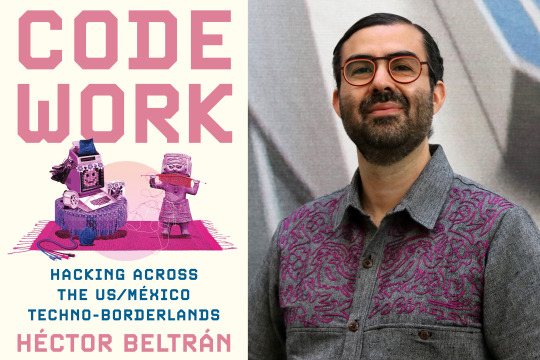

Several years ago, MIT anthropologist Héctor Beltrán ’07 attended an event in Mexico billed as the first all-women’s hackathon in Latin America. But the programmers were not the only women there. When the time came for the hackathon pitches, a large number of family members arrived to watch.
“Grandmothers and mothers showed up to cheer up the hackathon participants,” Beltrán says. “That’s something I had never seen in the U.S. It was inspiring. It felt good to see people who are usually excluded from these spaces being welcomed as part of this infrastructure of innovation.”
In a sense, the grandmothers hacked the hackathon. After all, hackathons started as male-dominated code-writing marathons, often inaccessible to women — who, even when they join tech or other professions, also handle much of the “second shift,” the unpaid family work women have been doing for generations. As one of the hackers told Beltrán, her grandmother “helps with everything in the day to day. She is the one that is in charge of everything.”
But having so many women in the hackathon audience, Beltrán observes, made visible an often-ignored point: All that unpaid work by women is part of the “infrastructure” that has let men code and innovate and build their own careers.
“Things people normally don’t think about, even like the structure of a hackathon, being there the whole weekend with your buddies, is something that has not been feasible for many women,” Beltrán says.
Now, in a new book, “Code Work: Hacking Across the US/México Techno-Borderlands,” published today by Princeton University Press, Beltrán closely explores the relationship between computer culture and society in Mexico. In it, he finds that coding is more than writing code: It’s an activity generating fruitful reflection by the coders — about themselves, their political and economic circumstances, and what roles they can play in society.
“A core concept of the book is precisely that as you’re coding and participating in these events, you’re also constructing a sense of yourself and how you fit into these larger societal structures and engines of difference,” says Beltrán, who is the Class of 1957 Career Development Assistant Professor in MIT’s anthropology program.
Breaking into the field
“Code Work” builds on field research Beltrán conducted in Mexico, attending hackathons, conducting interviews, and scrutinizing the country’s politics and economy. However, the roots of the project go back to Beltrán’s undergraduate days at MIT, where he majored in computer science and engineering. After graduating, Beltrán worked in consulting; a trip to Mexico City helped spur his interest in the differences between the tech sectors in Mexico and in the U.S.
“I saw that there was really a disconnect between different cultures,” Beltrán says.
As such, “Code Work” is an exploration of coding both as it is practiced within Mexico and in its relationship to U.S. computing culture. The book focuses extensively on hackathons, as events where the enjoyment and promise of tech innovation are evident, along with the tensions in the field.
In contrast to the U.S., where hackers have often gained cachet as “disruptors” shaking up the civic order, in Mexico coders are often trying to enter the established economic order — while also trying to use technology for social innovations.
“Usually we think about hacking in the Global North as a way to break out of certain constraints,” Beltrán says. “But in the Global South, there are people who have been excluded from these global cultures of innovation and computing. Their hacking work [is a means of] trying to break in to these larger cultures of computing.”
To be sure, Beltrán notes, tech culture in the U.S. has not always been enormously inclusive either. Referring to one Latino MIT student he observed who went to Mexico to participate in hackathons, Beltrán says, “I see this kind of move to go the Global South as a way to present yourself as someone from an innovative culture and be respected as an expert — to break out of the Global North’s own hierarchies.”
In studying matters of gender and tech culture, Beltrán examines issues involving masculinity and coding as well. The sheer hard work of coding can drive people to great accomplishments, but at times coders can be “outworking other people to the point of exploitation,” he notes. And while “the information technology economy wants you to think,” the labor of coding “complicates the divison of mind and hand.”
In the book, Beltrán also locates hackers who question the value of the hackathons they are participating in, noting that the winning entries rarely seem to become widely used applications; some hackathons function more as advertisements for innovation than engines of it. The tension between hacker independence and the larger corporate structures they perceive is a key motif in the book.
Such observations underscore Beltrán’s view that hackers, while producing code, are highly reflective as well, actively thinking about their place in society, their political economy, and more. These hackers, Beltrán finds, often apply the intellectual concepts of coding to the world in illuminating ways. One hacker Beltrán meets views his own career as a series of “loosely coupled” jobs — borrowing a computing term for marginally connected components. In the hacker’s view, this has a positive aspect, in contrast to a career dedicated to working only for one firm of subjectively questionable value.
Thought piece
“Code Work” has earned praise from other scholars in the field. Gabriella Coleman, a professor of anthropology at Harvard University who also studies hackers, has called the book “lucid, well-written, and lively,” and adds that by “deftly hitching ethnographic material to literature in anthropology, Latinx studies, science and technology studies, and Mexican studies and history, Beltrán has enlarged and enlivened the scope and direction of hacker studies.”
For his part, Beltrán says he hopes readers will undertand his book as a work that is not only about Mexico but distinctly international in scope, exploring how cultures evolve in relationship to each other, while meshed in a global economy. The issues raised in “Code Work” could apply to many countries, he believes.
These are topics Beltrán is also examining in an undergraduate class, “Hacking from the South,” which he is currently teaching.
“These are complex problems with a lot of moving parts,” Beltrán says. “It’s also very empowering for students themselves to make these connections.” Many students, he thinks, thrive when they have the opportunity to think across disciplines, and take those tools and perspectives out into the world.
“As an undergrad, I thought I was learning something at MIT in order to go out and get a job,” Beltrán says. “I wanted to come back to academia because it’s a place where we get to think deeply about the structures we’re entangled in, and question who we’re becoming and how to intervene in the world. Especially MIT students, who can potentially intervene by changing systems in a powerful way.”
#advertisements#America#Anthropology#applications#book#Books and authors#career#career development#Careers#code#coding#computer#Computer Science#Computer science and technology#computing#consulting#culture and society#development#direction#economic#economy#engineering#engines#Events#Faculty#Gender#generations#Global#Global economy#Hackathon
0 notes
Text
If you’re going to use the argument of “Every culture has braids.”, at least come with evidence.
Because I promise this:

And

Are two very distinctive styles.
The second picture is of Tibetan braids ( I don’t know what they’re called, if you do please let me know) and serve as a status symbol( or that of prosperity and health I could be mixing this up. If you know please correct me) . And often comes up to the number of 108( a sacred number in Bushism). They’re more so closer to mirobraids, but they aren’t braided to the scalp.
Box braids can come in a variety of numbers. And it’s one of the few styles that remained in African American culture for decades, even after enslavement outside of cornrows.
Like how are you going to say a French Braid is the same as cornrows when it’s clearly two very distinct styles. It’s like saying all culture make dumplings, when only a handful of cultures call them dumplings.
0 notes
Text
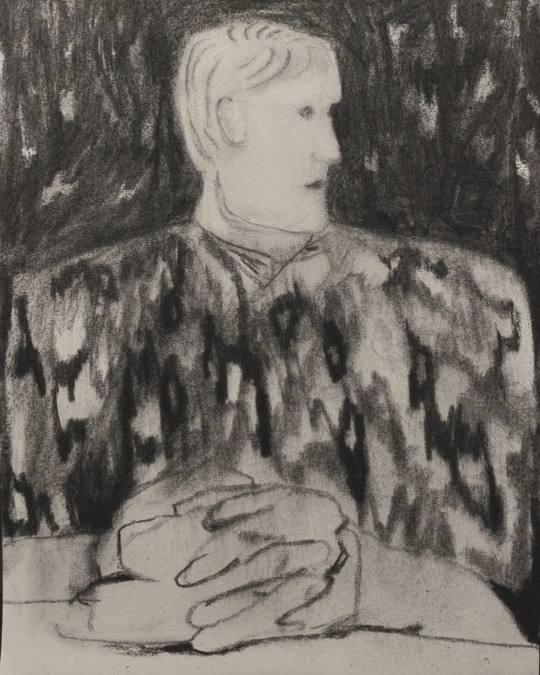




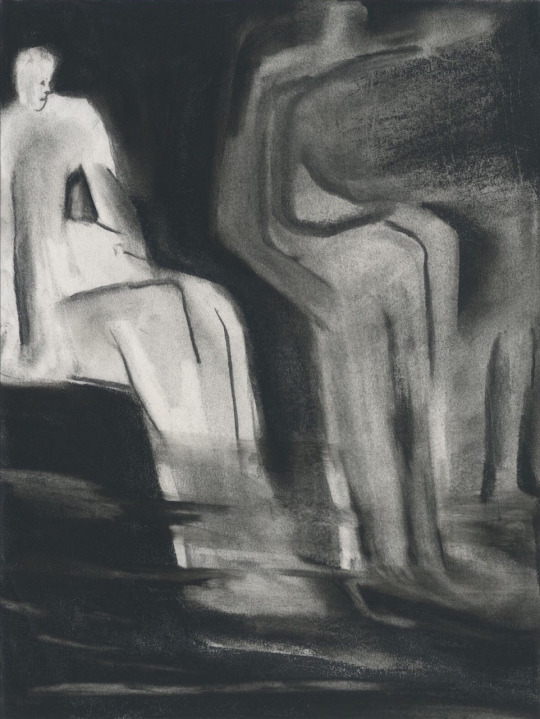
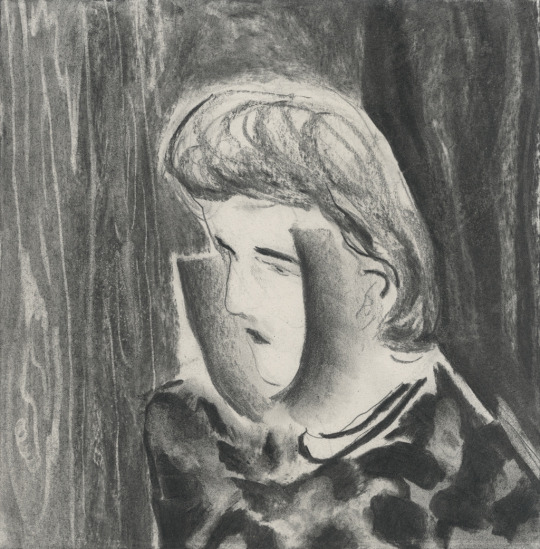
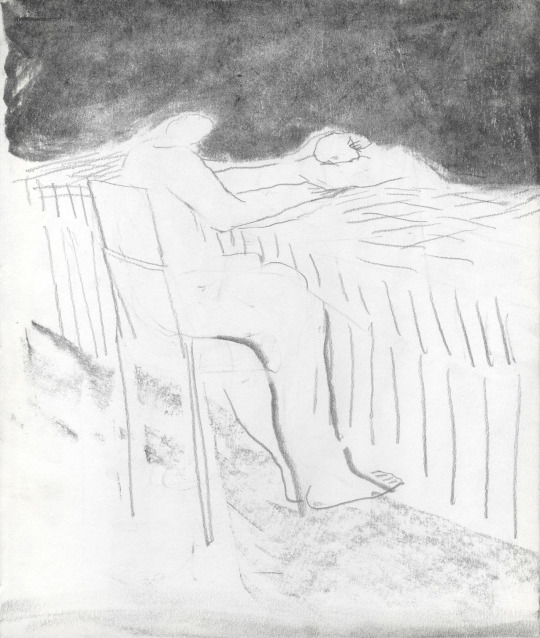


Drawings by Firenze Lai.
#drawings#art museum#traditional art#artwork#charcoal art#paintings#art institute of chicago#artworld#culture and society#art culture#european art#frank ocean#moodboard#photography#alex g#aphex twin#avantgarde#blonded#cinemetography#instatumblr#pinterest#golf le fleur#adidas sambas#wes anderson#kanye west#art niche#fashion design#musicindustry#skateboarding#studio a24
1 note
·
View note
Text
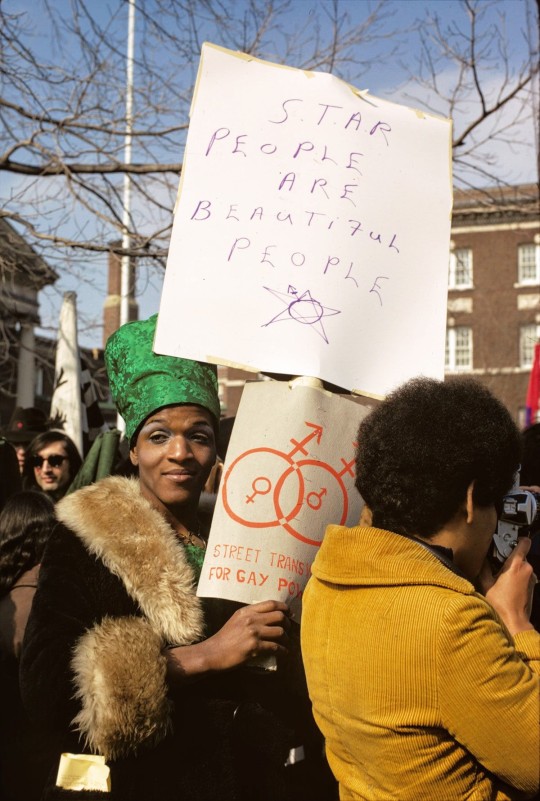
Marsha P. Johnson, co-founder of Street Transvestite Action Revolutionaries, at a gay rights demonstration in Albany, New York, March 14, 1971. Photo by Diana Davies.
#1970s#community#people#blm#culture#street#society#queer#trans#pride#gender#activism#black history#lgbtqia#humanity#queer history#marsha p johnson#70s#transgender#politics#counterculture#🌈
17K notes
·
View notes